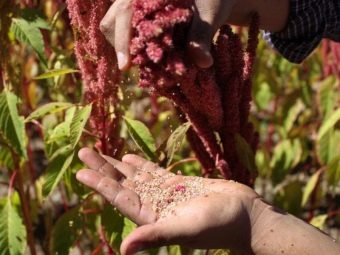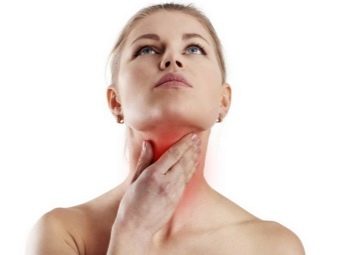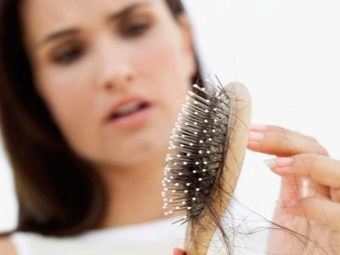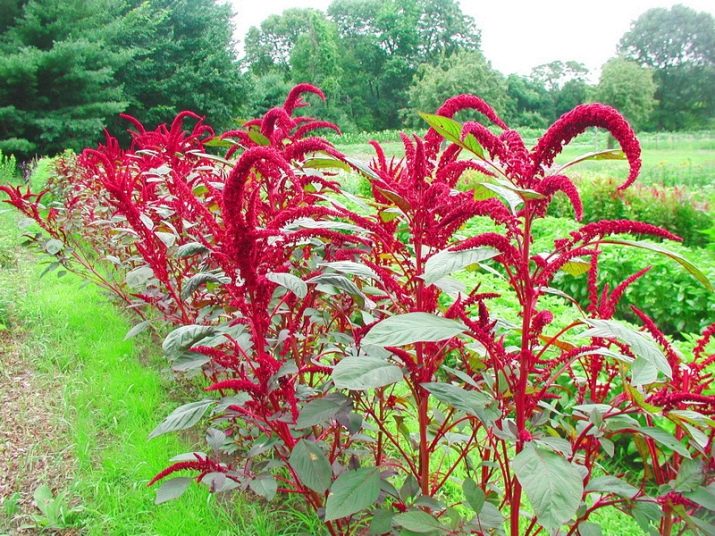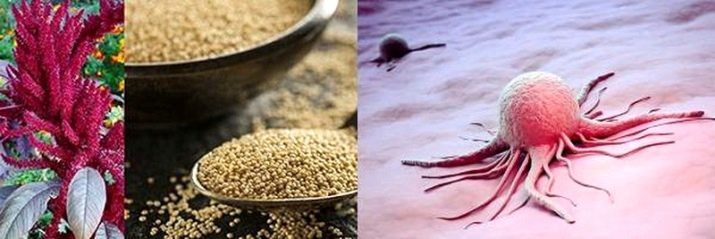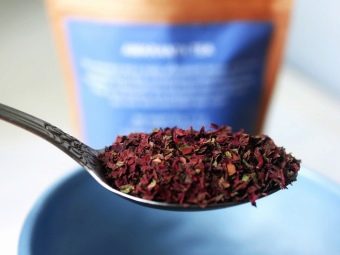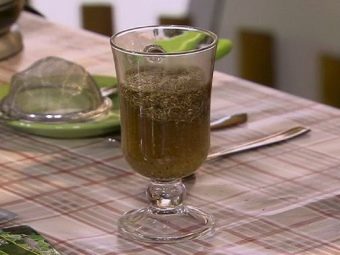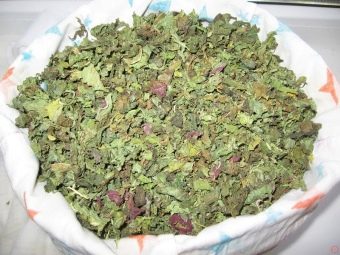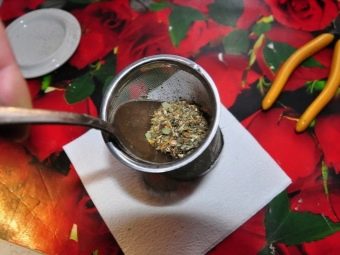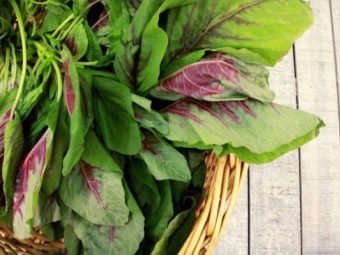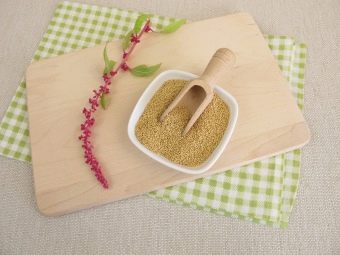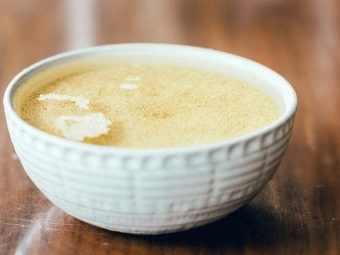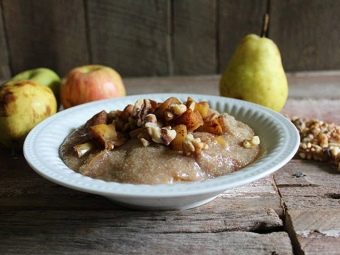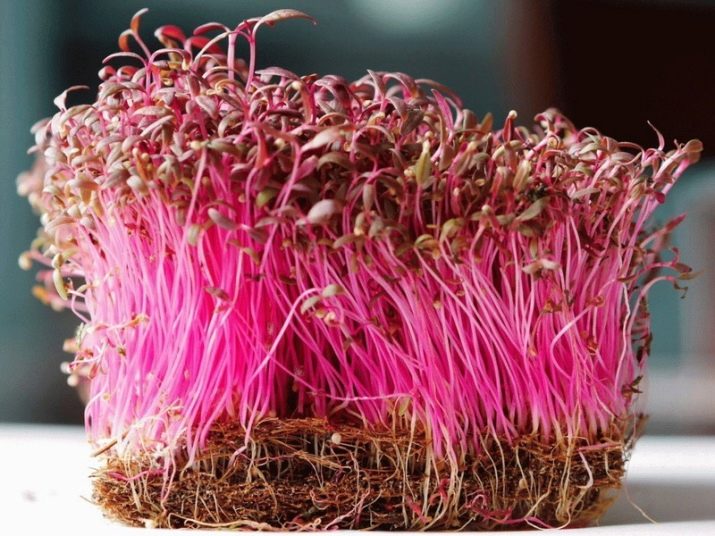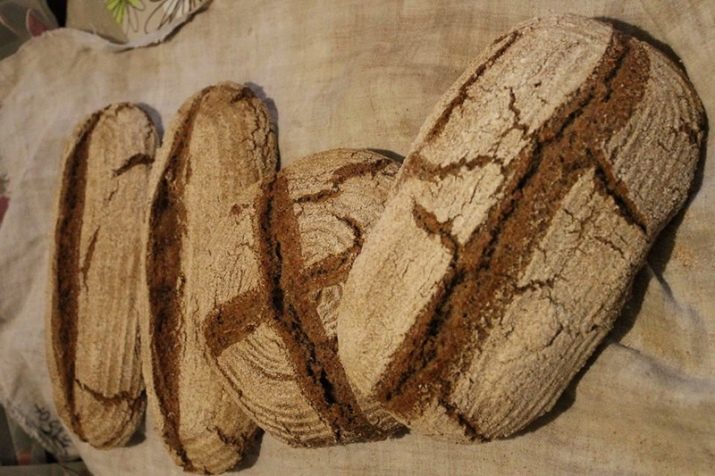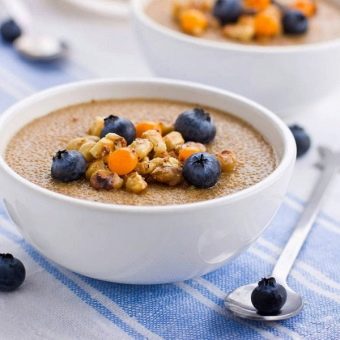Amaranth: useful properties, contraindications and use

Amaranth (schiritsa) is known since the times of the ancient Aztecs.For modern agriculture, this is a new plant with great potential. It is included in the list of medicinal, fodder and food crops. The plant has a good yield, high content of nutrients and vital elements for humans.
Plant description
Ancient Aztecs used amaranth along with beans, corn, wheat, and other food crops. In addition, the plant was used in the rituals of sacrifice. With the advent of Christianity, the idea of religious rites changed, and accordingly, the need to use amaranth as an offering to the Gods disappeared. Interest in shchiritsa resumed in the early twentieth century and served as a pretext for a detailed study of the unique properties of the plant, its therapeutic and culinary qualities.
Amaranth is an annual (often monoecious) plant that reaches a height of three meters or more. The impressive mass of the plant (from 5 to 30 kilograms) distinguishes it from other similar cultures. Science knows about nine hundred species of amaranth and sixty-five of its genera. The stem of an adult plant reaches a width of ten centimeters. Leaves of epileptic form, large, elongated, located on the thickened petioles. Culture has a high photosynthetic ability, that is, in a short time it can increase leaf mass.
The inflorescence of schiritsy - sprawling lush panicle. Its length can reach one and a half meters. Seeds ripen in September, have a brilliant white, pink, brown or black color. Nine grams of amaranth seeds contain about ten thousand fine rounded grains.
Widespread plant received in Asia, America, Europe and Africa. Recent trends in the development of agriculture have contributed to the cultivation of amaranth and its adaptation to universal growing conditions. Amaranth meal is used for the production of animal silage, used as a universal fertilizer. As for the plants themselves, they often become an element of the original landscape design of suburban areas.
Amaranth seeds are distinguished by a high content of fiber (16%), protein (7%), amino acids, lysine and low gluten content. They are the ideal raw material for the production of oil used in the creation of cosmetics, and squalene, which is used for the production of non-steroidal hormonal preparations. Ground seeds have a pronounced nutty smell. They are also used for the production of dietary products and culinary products.
Benefit
The beneficial properties of amaranth are due to the high content of vitamins, minerals, micro-and macronutrients. The biological composition of plants depends on the soil and their growing conditions.
- Schiritsa has a high content of quercetin. It is a bioflavonoid with antioxidant properties. It is used as an immunostimulating agent, contributes to body resistance, growth of cartilage and bone tissues.
- Rutin (Vitamin P) improves microcirculation, makes the walls of blood vessels more elastic, reduces the permeability of blood vessels and small capillaries. In medicine, it is used as an antiviral, hemostatic, antibacterial agent.
- Vitamin A (retinol, carotene) - fat-soluble biological substance that acts as an antioxidant. Accelerates metabolic processes in the body, sharpens vision, promotes healing of wounds, improves skin elasticity, and slows age-related changes in the body. It is a natural dye that gives the plant a red, orange or magenta color.
- Vitamin C (ascorbic acid) contributes to the adaptation of the organism to environmental conditions, increases resistance, immunity, has anti-inflammatory, antiviral effects. It is used in cosmetology as a part of masks and anti-cellulite skarb.A lack of vitamin leads to brittle blood vessels, hair loss and brittle nails.
- Vitamin B1 plays a crucial role in the redox processes of the body. It participates in the regulation of the nervous system, improves the conduction of impulses in synapses, protects against the toxic effects of the external environment, and prevents the influence of free radicals.
- Lactoflavin (riboflavin) participates in the synthesis of ATP, promotes the production of red blood cells, improves reproductive function and stabilizes the thyroid gland. It protects the retina from the harmful effects of ultraviolet irradiation, enhances visual acuity in the elderly, provides nutrition to the eyeball.
- Vitamin B5 actively participates in metabolic processes, improves cell regeneration. It is used to treat and prevent gastrointestinal diseases, normalizes the work of the nervous and immune systems.
- Vitamin B6 participates in the breakdown of fats, proteins and carbohydrates, provides energy saturation, normal work of all organs and systems. Enhances the absorption of vitamin B12, improving the production of red blood cells. Lack of vitamin B6 is manifested by drowsiness, fatigue, lethargy, apathy, or, conversely, leads to aggression, nervous overexcitement.
- Vitamin B9 (folic acid) provides full development of the body, promotes the growth of bone tissue, the synthesis of serotonin and norepinephrine. Reduces bleeding gums, vascular permeability. It is used in the treatment of gastric ulcer and intestinal ulcers.
- Vitamin PP (nicotinic acid) - prophylactic drug. It provides the full work of the cardiovascular and immune systems, is involved in metabolic processes, helps the body to cope with stress, high loads and fatigue.
Trace elements are also presented in large quantities.
- Zinc participates in the formation of blood cells, the metabolism of tocopherol and the breakdown of alcohol. Provides normal reproductive function, the activity of the prostate, promotes the synthesis of insulin and growth hormone.
- Selenium is a natural antioxidant, prevents the influence of harmful substances from the external environment. This is a strong anti-inflammatory, wound healing, antimicrobial agent. Its deficiency is manifested by muscle pain, weakness, infertility, pyelonephritis and pancreatitis.
- Copper - The most important component of the myelin sheaths, promotes the synthesis of collagen, proteins, fats, carbohydrates. Controls the work of the nervous system, accelerates the conduction of nerve impulses, is an active participant in metabolic processes, strengthens bones, increases the elasticity of cartilage tissue.
- Manganese promotes full absorption of B vitamins, ascorbic acid and retinol. Strengthens the immune and nervous systems, improves the digestive tract, enhances insulin production and accelerates metabolic processes. It is a prophylactic against rheumatoid arthritis, osteoporosis of bones in women during menopause.
- Iron It is a catalyst for redox processes. Participates in the process of respiration, contributes to blood formation, absorption of oxygen. It is used for the prevention of iron deficiency anemia during pregnancy, with strong physical exertion, muscle weakness.
- Phosphorus provides full development of the body. Participates in metabolic processes, accelerates the absorption of macro-and micronutrients, strengthens bones, teeth and cartilage tissue. Stimulates the hormonal system, the thyroid gland, normalizes nervous activity.
- Sodium provides full body function. It is easily displayed, therefore its constant receipt is required. With a lack of sodium there is a loss of appetite, flatulence, spasms of smooth muscles, decreased vision and taste perception.
- Calcium necessary for the normal formation of the skeletal system.It provides the full work of the brain, spinal cord, is responsible for metabolic processes, strengthens the teeth, and contributes to the prevention of rickets.
- Magnesium regulates the neuro-humoral activity of the body, is responsible for the transmission of impulses to the neurons of the brain, ensures the normal course of pregnancy and the formation of the fetus. Magnesium deficiency is manifested by dizziness, arrhythmia, fatigue, muscle pain.
- Potassium ensures the normal functioning of the cardiovascular and urinary systems, helps prevent strokes and heart attacks. Prevents the appearance of edema, dropsy of pregnant women, baldness, hair loss and brittleness of the nails.
Contraindications and harm
Contraindications to the use of amaranth is not revealed. However, there is a list of diseases for which its consumption is not recommended.
- Individual intolerance, allergic reactions of the body to the components of amaranth.
- Acute inflammatory processes of the pancreas, fatty liver, gluten enteropathy, dyspeptic symptoms.
- Peptic ulcer, elevated blood cholesterol, vascular thrombosis, low blood pressure.
Children under one year old should not use amaranth oil in their diet to avoid indigestion. Including the product in the child’s menu should be combined with vegetables and herbs.
Application options
Due to its beneficial properties, amaranth is widely used in traditional medicine and food industry. Plants are divided into three categories: food, vegetables and grains. Cereal varieties are interesting for cooking, and in traditional medicine all parts of the plant are used.
ethnoscience
For therapeutic purposes, schiritsu use externally and internally. Culture is effective as a hemostatic, anti-inflammatory, absorbing agent. It is used to increase immunity, reduce pain in case of painful periods, with juvenile bleeding.
Apply it in diseases of the liver, chronic and acute cholecystitis. The plant contributes to the restoration of liver cells, enhances the removal of bile, prevents the formation of stones in the gallbladder.
This is an excellent antitumor agent. Recent studies have confirmed the ability of amaranth to prevent the formation of cancer cells.
For eczema, atopic dermatitis, dermatosis, allergic manifestations, decoctions or ointments based on leaves and roots are used. For stomatitis and oral diseases, rinses prepared from the roots and leaves of the plant are used. For burns, frostbite, colloidal scars, scars, insect bites, tinctures and extracts from amaranth are used.
In case of incontinence, infusion of amaranth inflorescences is used. For this, a tablespoon of finely chopped flowers is poured with a glass of hot boiled water and kept in a water bath until the volume is reduced by one and a half times. Take a tablespoon three times a day after meals.
The last reception is recommended late in the evening.
In inflammatory processes of the urogenital system (acute and chronic cystitis, urethritis), extracts of leaves, roots, and stems of the plant are used. They are prepared like this: half a liter of hot boiled water is taken in two tablespoons of raw materials. Oilcake insist about ten hours, filter and apply one glass during the day after meals. Reception can be divided into two or three times.
In Taoist practices, a special recipe for rejuvenation of the body is popular, which includes amaranth blossoms in a miraculous composition. Chamomile flowers, birch buds, St. John's wort, and amaranth grass in equal quantities (2 teaspoons in each) pour 500 ml of boiling water over and insist overnight. The resulting composition is filtered through a sieve, add honey to taste and drink twice a day in a warm form, 100 ml each time.
The course is repeated no earlier than three years.
In inflammatory processes of the skin, frostbite or mild burns, amaranth herb baths are used. Three hundred grams of raw material is poured with two liters of water, brought to a boil, insist fifteen minutes and add strained infusion to a common bath.
The juice of amaranth leaves is used for gastritis, pain in the right hypochondrium, diabetes mellitus of the first type, bleeding, heavy menstruation. The only requirement for this type of therapy is juice should be freshly squeezed.
Butter
About amaranth oil should talk separately. It is produced by cold pressing from the seeds of a plant. The oil has a pleasant nutty flavor, has unique medicinal and cosmetic properties.
The product accelerates skin regeneration. It is used for eczema, viral infections, colloidal scars and scars, trophic ulcers, neurodermatitis, fungal lesions of the feet and nails.
In diabetes and stomach ulcers, amaranth oil is ingested. However, obese people should be wary of this product and strictly follow the recommended dose.
For angina, gingivitis, stomatitis, the product is used as a wound healing, anti-inflammatory agent for the oral cavity.
It is widely used in gynecology for cervical erosion, colpitis, cysts. Oil helps to improve reproductive function. It normalizes the production of hormones in the body, enhances ericile function in men, and is recommended for diseases of the prostate gland and reduced sperm motility.
The product improves the trophic processes of the eyeball, enhances visual acuity, is used for retinopathy, cataracts, chronic conjunctivitis.
Amaranth oil occupies a special place in cosmetology due to the high content of squalene in its leaves and grains. It is an indispensable component that has a nourishing, softening, moisturizing effect. It prevents the formation of fine wrinkles and significantly reduces the “crow's feet”.
The use of amaranth is shown in adolescence for the prevention of acne, acne, reducing oily skin. The oil is used both as an independent tool and as part of preparations for skin care of the face.
Cooking
The usefulness of amaranth is due to its properties. This is a gluten-free product. The leaves of the plant are added to almost all dishes, salt, kvass, stew, served with meat and sauces.
Amaranth seeds include bakery products (bread, waffles), used to make pasta and pasta. Manufacturers of infant formula include amaranth in the composition of certain types of their products.
A special place is occupied by amaranth grains in nutrition as a valuable biological additive. Dietary porridge from medicinal herbs will replace a full breakfast, saturate the body with vitamins and minerals, which is so necessary when reducing caloric intake.
Amaranth grains are recommended to include in the diet of professional athletes. Carbohydrates replenish wasted energy, and high-grade proteins and amino acids restore muscle fibers and help reduce pain after exercise.
Amaranth porridge is an excellent breakfast for people involved in active sports. To prepare it, rinse with three hundred grams of grains and pour a liter of cold water. Boil it is necessary, stirring occasionally, over low heat for an hour.
Healing leaves of the plant are especially popular in cooking. They serve to decorate dishes, are part of a variety of salads. The leaves are used in fresh and dried form (as seasoning for the winter). Amaranth leaf tea not only has beneficial properties, but also surprises with its extraordinary taste.
Amaranth has a rather high caloric content - 359 Kcal per 100 g. Due to this, it helps to rid the body of the constant feeling of hunger during exercise, reduces the need for constant snacks.
The latest trends in healthy eating make us look for new products in order to diversify the menu and saturate the body with useful substances. Sprouted amaranth grains deserve special attention, and their regular use is the prevention of vascular diseases, atherosclerosis, diabetes mellitus and seasonal avitaminosis.
Sprouted grains are best consumed in the morning. It activates life processes, increases efficiency, enhances the reaction, adapts the body to stressful situations.
Amaranth starch is another useful product. Its properties are valued in the molecular kitchen, in the preparation of beer malt and dairy products.
Amaranth bread
Nutritionists have ambiguous attitudes to amaranth flour due to the fact that this product is high in calories, but its use significantly outweighs the disadvantages. The composition of the flour is practically no different from the grains, and the cooked bread from amaranth has an extraordinary taste and beneficial properties.
To make bread, you need 100 g of amaranth flour, 400 g of wheat flour, part of which is recommended to replace with bran, 3 tablespoons of dry yeast, 350 g of water, 2 tablespoons of oil, 50 g of sugar, salt to taste. All of the listed ingredients are combined and mixed until a homogeneous mass. The mixture is left in a warm place until the volume doubles. Then it is transferred to a previously prepared, oiled form and baked in an oven at 180 degrees until cooked.
Reviews
Consumers note the extraordinary taste of dishes prepared from amaranth. Baking from it attracts with an exquisite aroma with spicy nutty notes. The product is able to diversify the usual menu, add saturation to vegetable salads.
Amaranth oil is highly appreciated both as a cosmetic and as a biological additive. Taking the oil inside, women note a normalization of the cycle, a decrease in pain during critical days, a decrease in sweating during menopause.
On the beneficial properties of amaranth, see the following video.




